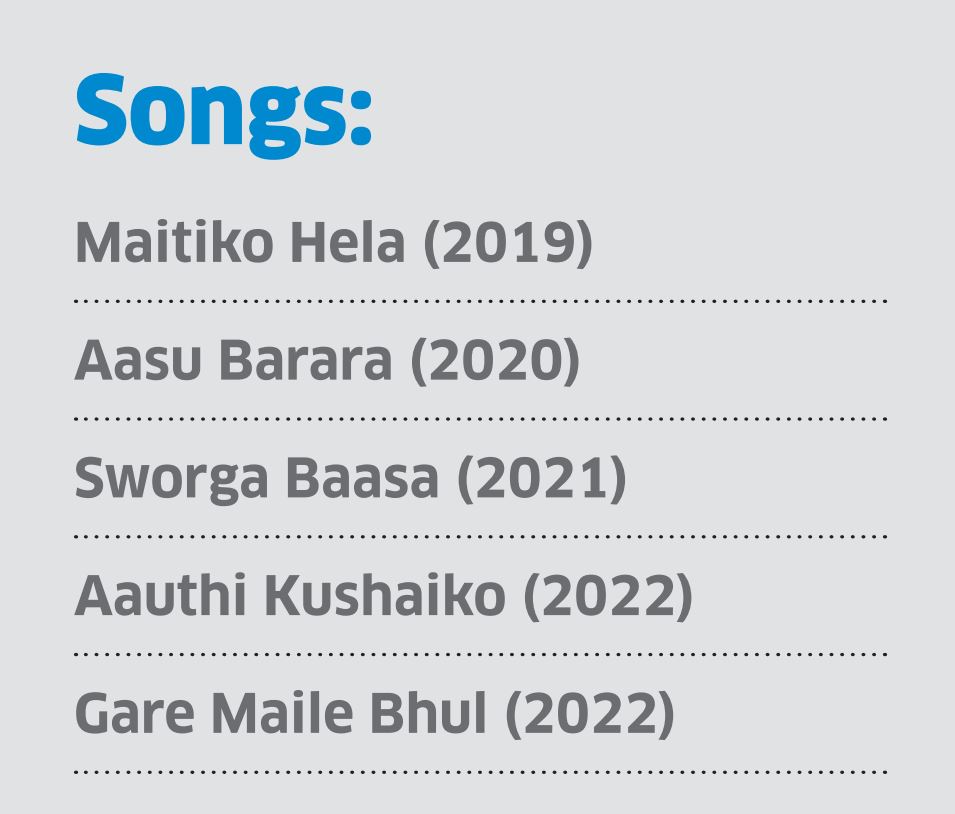Gopaldas Bade obituary: A Gandhian to the core
Birth: 29 May 1924, Kavre
Death: 3 August 2022, Kavre
Gopaldas Bade, a Nepali Congress leader who championed the Gandhian philosophy of truth, non-violence and service to humanity all his life, passed away on August 3. He was 98.
The last of the surviving first-generation Congress leaders from Kavre district, Bade was born into a well-to-do family and had a relatively comfortable childhood. His priority was never money. He instead believed in living a simple life and serving people.
At a young age of 17, Bade traveled to India to become a resident of Gandhi’s ashram in Gujarat, where he stayed for six months. Tulsi Mehar Shrestha, a close aide to Gandhi, was a friend of Bade’s elder brother Rajdas. It was through this connection that Bade became one of the few Nepalis to learn about politics, philosophy and ways of living under the Mahatma himself.
Bade regarded his time at Gandhi’s ashram as “a divine grace” and would champion Gandhi’s ideology all his life. At the ashram, he also met prominent Indian scholars, politicians and reformers including Madan Mohan Malaviya, Vinoba Bhave and Kaka Kalelkar. The influence of these individuals also shaped Bade’s political and social thoughts.
After returning to Nepal, Bade became active in politics alongside his brother. It was the time of absolute Rana rule when party politics and democratic movements were being squelched.
Bade began attending the clandestine meetings of Nepali Congress both in Nepal and India. In this period, he also built close relations with the party’s top leaders including BP Koirala and Krishna Prasad Bhattarai. Once, he even hosted the leaders, both wanted by the authorities at the time, in his Kavre home before escorting them safely to Kathmandu in a secret political mission.
“Bade’s home in Kavre used to be a safe house and the party’s office,” says Ramhari Khatiwada, a Congress leader.
After Rajdas died young in a plane crash, Bade took it upon himself to realize his elder brother’s dream of becoming a freedom fighter, for which the Ganeshman Singh Foundation honored him with the title of ‘Prajatantra Senani’ in 2020.
Though Bade remained active in politics most of his life, he always considered social service his priority. (He was a Gandhian after all.)
He was involved in many charity and social works in his district, mainly his hometown Banepa and is credited with laying the town’s modern foundation.
He is survived by two sons and daughters each.
Santosh Sapkota: Finding happiness in an unexpected opportunity
We all have had a moment when we were uncertain about what our future career will look like. Some of us stick to the profession we are in, whereas some of us take a slightly different path. But for Santosh Sapkota, it was not just a slight adjustment but a total change of career path.
Sapkota, now 24, has been working as a social media manager for several well-known faces in Nepal and India. But his initial interest was completely opposite to what he was doing now; digital entrepreneurship.
Born in Parbat, Sapkota was moved to his aunt’s house in Rupandehi at the age of three to ensure his better schooling. “At that time, Maoists were bombing every private school in my village. For safety and education, I was sent to Rupandehi,” he tells me.
He completed his schooling and moved to Bangalore, India to receive a diploma in mechanical engineering in 2013. Little did he know that his career would totally change.
Completing the diploma in 2015, Sapkota worked for 2 years in Bangalore as a service supervisor in Sri Manjunatha Pipes and returned to Nepal in 2018. In Nepal, he got his hands on a job as a service advisor in one of the companies of Agni Group, namely Agni Motoinc Pvt. Ltd.
But things took a different route in 2017, when he became an admin of the Facebook fan page for Arujn Sapkota, his cousin who had started his journey as a Nepali folk singer. He was unable to complete his engineering studies due to some family and financial issues. Nevertheless, he had not lost his hope.
Although unable to fulfill his initial goals, Sapkota, a folk song lover and cricket enthusiast, was adapting to his new role as a social media manager. But that journey wasn’t easy for him either. “I faced a lot of issues within the fan page, with no clue on how to solve it,” he says. Slowly but surely, he did get a handle on those issues, and the page started getting responses. He started getting better at what he was doing, which was clearly seen on the page he was handling. “The fan page started getting more of an audience, because of which my brother started getting a lot of inquiries on who was handling the page,” he tells me.
His exposure grew when people started finding out that he was behind the management of the fan page, and various celebrities started offering him jobs to handle their social media. Celebrities faced a lot of issues, like accounts and pages getting hacked, and some were facing problems while publishing their posts, for which they started seeking Sapkota’s help.
“I think it was the realization that well-known people were looking for my help, that boosted my motivation to take this work as a career,” says Sapkota.
It was only in 2019 that Sapkota started collaborating with other celebrities and handling their social media. One major attraction for him in this job was the way the pages worked. “It excites me to see followers increase, to communicate with many people, and most of all, being able to convey messages to a large group of audiences,” he tells me.
Although quite interesting, he says that the task is difficult, especially in Nepal. “Here, it is difficult to make payments to boost the posts, properly monetize the accounts, and also Nepal is not eligible for page monetization,” he says. Along with that, the job does not have any working hours. Sapkota needs to be available at any time of the day, as there is no surety on when his clients might need him to solve a problem in their account. “Accounts might get hacked at 1 am. We never know,” he says. And sometimes, it might take hours to solve such problems, giving him no guarantee of how much time he will have to invest.
Currently, Sapkota handles 15 social medias in total, of six celebrities, among which some of them are Saigrace Pokharel (Nepali storyteller), Kushal Bhurtel (Nepali cricketer), and Shirish Devkota (Nepali singer). In the past, he has managed social handles of known personalities like Maheshwar Jung Gahatraj (Sports Minister of Nepal), and Mujahid Alam (an Indian politician).
He believes that there are a lot of opportunities for youths in the digital world. “There are a lot of areas to explore in digital and social media, you just have to find the right path for yourself,” he says.
In the case of Sapkota, he does not see himself leaving this job anytime soon. “I love what I do. As long as people face problems with social media, you will definitely see me around trying to solve those problems,” he says with a satisfaction in his voice.
InDepth: Will there be demand for Nepal’s excess electricity?
Sixty-four percent of Nepal’s industries are compelled to install diesel generators in light of the frequent power outages, according to a research paper by the Confederation of Nepalese Industries (CNI) published in May 2022. Generator-use, the paper says, increases the industries’ monthly operation costs by an average of 5.3 percent.
Nepal currently exports 364MW surplus electricity a year to India but it cannot meet its own domestic energy needs.
Suresh Bahadur Bhattarai, spokesperson for the Nepal Electricity Authority (NEA), the country’s primary energy producer and sole transistor and distributor, disagrees with the CNI report.
“Yes, there are power outages in industrial areas but I doubt 64 percent of Nepali industries have to rely heavily on generators,” he says. “The fact is, new industries are facing shortages due to the lack of transmission lines.”
The 2017 Electricity Demand Forecast Report by the Water and Energy Commission Secretariat, under the Ministry of Energy, projected the country’s electricity demand to shoot to 5,800MW by 2025 and to 9,000MW by 2030. These projections were based on the predicted long-term GDP growth rates, as forecast by the International Monetary Fund (IMF).
But the government’s projections do not add up. According to the report, the demand should have reached 2,500MW by now. But Nepal’s current electricity demand stands at around 1,800MW in peak hours (mornings and evenings) on working days and around 1,100MW in base hours (daytime). Likewise, the demand drops to 700MW in off-hours (11 pm-5 am).
Also read: A snapshot of Nepal’s energy ecosystem
Nepal’s most power-dependent sectors are manufacturing, followed by households, service industry and transport.
The government also predicts an average 10 percent increase in annual electricity demand, which is also not in keeping with the reality.
Energy experts say national economic growth and energy consumption are directly proportional. In other words, energy demand will increase only if the GDP growth rate also goes up.
Nepali industries have asked for a yearly average of 400MW in bulk electricity to meet their needs, which the NEA has been unable to supply, says the CNI.
Bhattarai, the NEA spokesperson, maintains that building more transmission lines is the answer.
“A few transmission lines are in the pipeline. When they are ready, a lot of the supply-demand discrepancies should be resolved,” he says.
According to him, the NEA is currently conducting feasibility studies for the 90-km Lamahi-Chhinchu, 130-km Sitalpati-Inaruwa, and 115-km Arun Hub-Dudhkoshi transmission lines. The carrying capacity of these lines is 4,400MW.
“Slowing down progress on these lines are the various political, environmental, and financial hurdles,” adds Bhattarai.
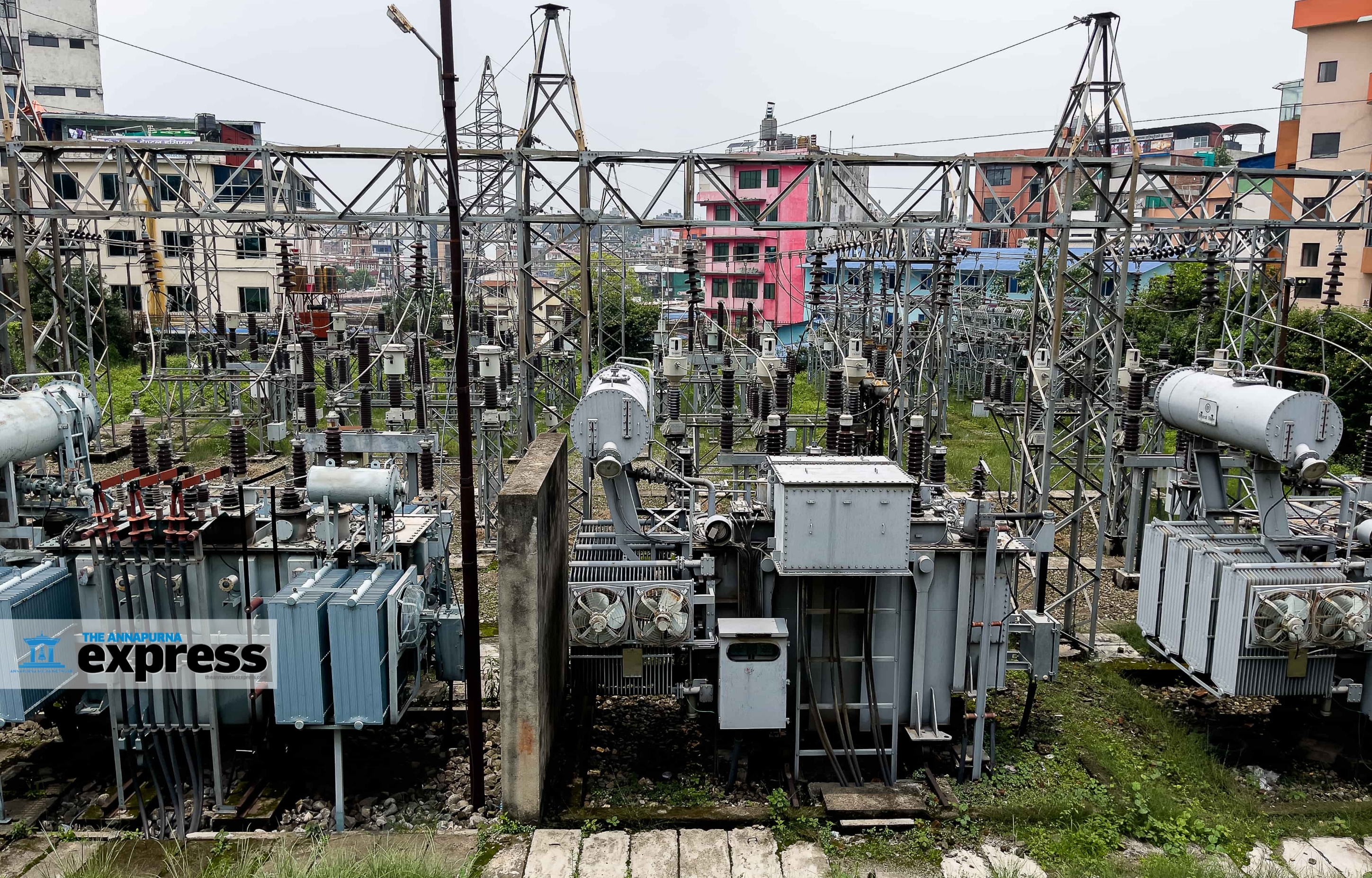
Mukesh Kafle, former managing director of the NEA, blames the current leadership at the authority for the failure to meet the industries’ demands.
“During my tenure, I treated the whole country as a single house. There was uniform load-shedding as a result,” he says. “The current leadership at the authority, however, has ignored the industries in order to meet household energy needs.”
Kafle claims Nepal is producing enough electricity for everyone.
But over the years the nature of the challenge in electricity demand and supply has changed.
“We are in a situation whereby we need to increase the demand now. We are on the verge of an electricity demand-deficit,” Kafle adds. “Even if the electricity authority meets the current demand of the industries, we will still have a surplus.”
This year alone, the government has signed power purchase agreements on 7,000MW with different private producers. In the next couple of years, this will be added to the national grid even without a corresponding increase in demand.
Shailesh Mishra, CEO of Independent Power Producers Association, shares Kafle’s view.
“I also don’t see any problem with electricity production,” he says. “But despite our comparably low demand, we are still unable to adequately power-up our industries due to our poor distribution lines.”
The latest budget for the fiscal year 2022/23 aims for a median GDP growth rate of around seven percent. In that case, the electricity demand is expected to see a 14 percent and a 28 percent bump by 2025 and 2030 respectively.
Nepal can produce around 42,000MW of electricity. If the country grows at around nine percent a year, it will be in a place to utilize its maximum capacity by 2040.
Also read: Is our energy ecosystem consumer-friendly?
The electricity sector has at least conducted some studies and formulated relevant plans and policies. Not so with petroleum. The Nepal Oil Corporation (NOC), the country’s sole importer and distributor of petro products, has undertaken no such long-term studies.
“In keeping with previous trends, the NOC assumes that the demand for diesel, petrol, and aviation fuel would all increase by around 10 percent a year, while the LGP demand would go up by 20 percent a year,” says Binit Mani Upadhyay, the spokesperson of the corporation. “As we import based on current demands, there have been no other assessments.”
In the fiscal year 2020-21, the NOC sold 587,677kl petrol, 1,698,427kl diesel, 70,400kl aviation fuel, and 477,752MT LPG. (The expected import figures for 2025 and 2030 are listed in the table alongside.)
A 2017 Asian Development Bank report ‘Nepal Energy Sector Assessment, Strategy and Road Map’ forecast a 1.9 percent annual increase in the country’s energy demand through 2035. This was slower than the projected GDP growth rate of 3.7 percent for the same period.
Likewise, the share of electricity in the energy demand of the industry sector would increase from 25 percent in 2010 to 35 percent by 2035, or by 5.4 percent a year. At the same time, the share of oil and coal will increase by 4.3 percent and 3.7 percent, respectively.
Dilmaya Sunar obituary: The singer who found peace only in death
Birth: 19 Nov 1992, Surkhet
Death: 25 June 2022, Kathmandu
Dilmaya Sunar, a budding Dohori (Nepali traditional folk music genre) singer, died aged 30 on June 25.
Born the second child of the three daughters to her parents, Sunar spent her childhood in a village in Surkhet district tending to the cattle and helping her folks with household chores. She was musically gifted and used to entertain friends with her singing whenever they went to the forest to graze their cattle. But never did Sunar think of being a professional singer.
She was just 13 when her parents married her off against her will. The marriage was full of troubles. Sunar’s husband abused and tortured her no end, but she felt helpless and continued to live with him. The couple had a son and it was upon Sunar to look after the family. She ran a small grocery shop and what little money she made, her husband, a serial gambler, spent most of it.
When Sunar’s family fell into debt due to her husband’s gambling problem, it once again fell on her to settle the loans. She went to Kuwait to work and made enough money to clear the debt as well as build a house in Nepalgunj.
When Sunar returned home after two years, she had hoped her husband would have cleaned up his act by the time. He hadn’t and the couple started falling out again.
Sunar filed for a divorce in 2016 and got herself out of the abusive marriage. Her son chose to stay with his father. She would later find out that her ex-husband had remarried and that he had been abusing her son.
Distraught, Sunar wanted to reunite with her son, but that never happened. Her relationship with her own parents was also failing on the account of her being a divorcee. Once again, she decided to work abroad—only this time, to find her independence.
Sunar worked in Oman for a year and returned to Kathmandu in 2018. She rekindled her childhood passion for singing when—encouraged by her neighbors—she began performing at Dohori restaurants and shows. Sunar began pursuing a musical career in earnest after recording a few original songs that were loved by her listeners.
She seemed to be doing well in life and even found her love in a man named Khil Bahadur Shrestha.
But trouble and tragedy never quite left Sunar until her death. She was heart-broken when she discovered that Shrestha had lied to her about his earlier marriage.
On June 25, she was found dead in her rented room. Autopsy ruled her death as a suicide-by-hanging.
Sunar had also tried to kill herself following an argument with Shrestha, three months prior to her actual death, police investigation later revealed.
What’s up with Nijgadh International Airport?
Nepal witnessed two major air disasters in 1992, prompting the then government led by Girija Prasad Koirala to commission a survey to find an alternative to Kathmandu’s Tribhuvan International Airport (TIA). Of the eight sites proposed by the Nepal Engineering Consultancy Service Center Limited in 1995, Nijgadh was deemed the most suitable. A Korean company conducted a feasibility study in Nijgadh the same year and came up with a cost estimate of Rs 700bn. But things went nowhere for another 13 years.
In 2008, the government led by Pushpa Kamal Dahal revived the idea and decided to undertake the project under the Build Own Operate and Transfer (BOOT) model. Two years later, in March 2010, the Ministry of Civil Aviation signed a $3.55m contract with Landmark Worldwide, a Korean company, to carry out a detailed feasibility study. The company submitted its report to the government on 2 Aug 2011. But the plan stalled, again.
Then, in 2019, the Nepal Investment Board announced a global tender to build the airport. But the board’s attempt to attract foreign investors fell flat without the project’s Detailed Project Report (DPR) and Environmental Impact Assessment (EIA) reports.
In its policies and programs, the current government announced a start of airport construction from the fiscal 2023/24. However, there are challenges galore. Over the years, there has been a strong opposition against the airport project, mainly around environment and other viability issues.
After the formation of the KP Oli led-government in 2018, the then Civil Aviation Minister Rabindra Adhikari had made the airport one of his priorities. But when the EIA report came out, the project became a major environmental concern. The report proposed cutting down 2.5m trees to make room for the airport, causing unprecedented damage to local flora and fauna.
Of the 80.45 sq km land allocated for the airport, almost 70 sq km are dense forests. Moreover, the proposed site is three to four times that covered by even the biggest airports in the world.
The latest Supreme Court verdict has directed the government to carry out a fresh EIA of the site and to ensure minimal environmental damage during project-development.
Top leaders of the ruling five-party alliance, including Prime Minister Sher Bahadur Deuba, recently pledged to build the proposed Nijgadh International Airport come what may. They even visited the proposed site. The Nijgadh International Airport project is also important because it is linked to other mega-undertakings like the Kathmandu-Tarai Fast Track and the Outer Ring Road. And yet, over the years, the airport plan has been marred by sluggish progress, increasing costs and a myriad other controversies.
The airport should have minimal environmental impact
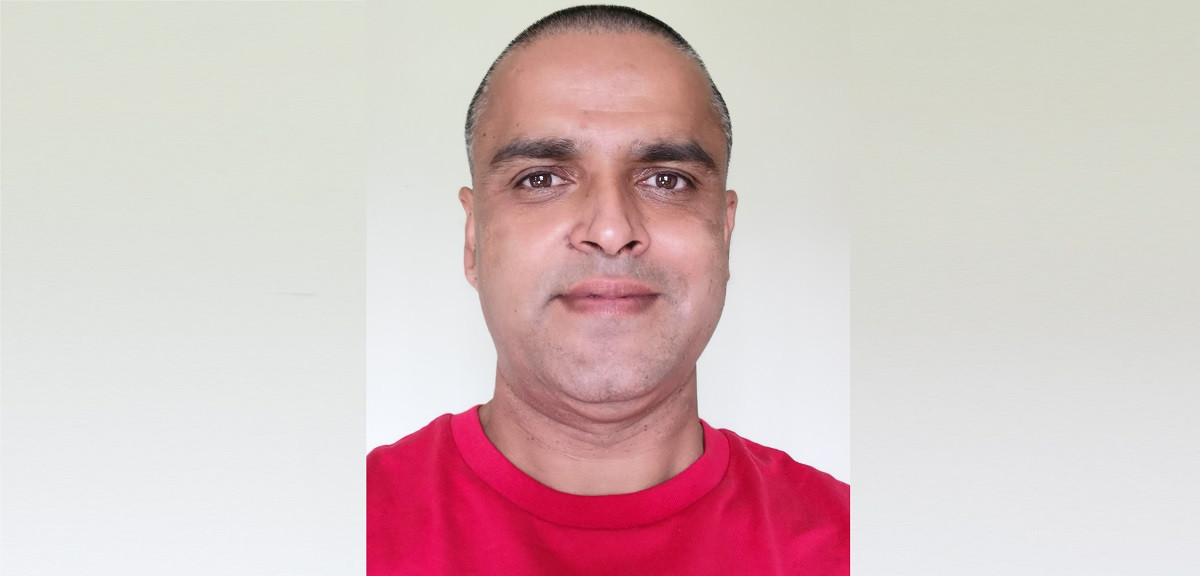
Arjun Dhakal
Environmentalist
At issue here are not only environment and wildlife, but also other important things like DPR, EIA, budget, viability, feasibility, etc. In a national pride project, each of these things must be thoroughly studied.
One of the most sensitive but lesser-known issues is that the proposed area, which traverses a water corridor, receives excessive rainfall. Only last week, it got 225mm of rainfall in eight hours.
Even though all the major political parties are in the airport’s favor, none is interested in conducting a detailed study. The Supreme Court has instructed concerned authorities to start from the beginning, and this time, with all the resources and research, the project is likely to go ahead, finally. It is crucial that the airport be built with minimal damage to surrounding areas.
The government should also be clear about the airport’s purpose. What kind of airport are we talking about here? One aimed at handling cargo or passengers? No one knows for sure.
InDepth: Is our energy ecosystem consumer-friendly?
Binod Kumar Bista is a Bachelors of Art (BA) student at Kathmandu’s Ratna Rajyalaxmi College. Originally from a village in Kailali district of far-western Nepal, he lives in a rented room and cooks for himself using LPG. Bista knows the induction stove is more cost-effective and energy-efficient. Yet he is hesitant to make the switch.
“I have limited time for cooking. What if the electricity suddenly goes out?” the 21-year-old asks. “I also cannot afford to have both the options at the same time.”
Research suggests heat-efficiency of induction cookers is nearly 90 percent, while that of conventional gas stoves is 50 percent. The former are also lighter on the consumers’ pockets. A 2021 study conducted by Amrit Man Nakarmi, a professor at the Institute of Engineering, Tribhuvan University, found that cooking on an induction stove is over 50 percent cheaper than cooking on gas.
Yet Nepalis are reluctant to fully switch to induction cookers. While most urban households rely on LPG for cooking, biomass—at a staggering 67 percent—remains Nepal’s dominant energy source.
What makes people cling to traditional energy sources and is anything being done to change their behavior?
Also read: Possibilities and pitfalls of hydroelectricity
Our energy system doesn’t factor in consumer voice. The authorities dictate whatever they think is right.
At least in the case of biomass and rural electricity distribution, there is more consumer participation in rule-making and enforcement.
Bista’s family in Kailali uses biomass for cooking even though they also have an LPG stove. His family hasn’t fully switched to gas as firewood is both cheaper and more easily available. He says another reason many families in his village prefer firewood to LPG is because they are afraid of possible mishaps from gas-use, while some reckon that food cooked on firewood tastes better.
Dipak Gyawali, former minister of water resources, says it is difficult to get people to move to electricity, but, ultimately, they will have to make the upgrade.
“For example, instead of jumping into electricity from firewood, people in rural areas can start with briquettes or improved cooking. Briquettes are cleaner, forest-friendly, longer burning, and more economical than traditional logs,” he says.
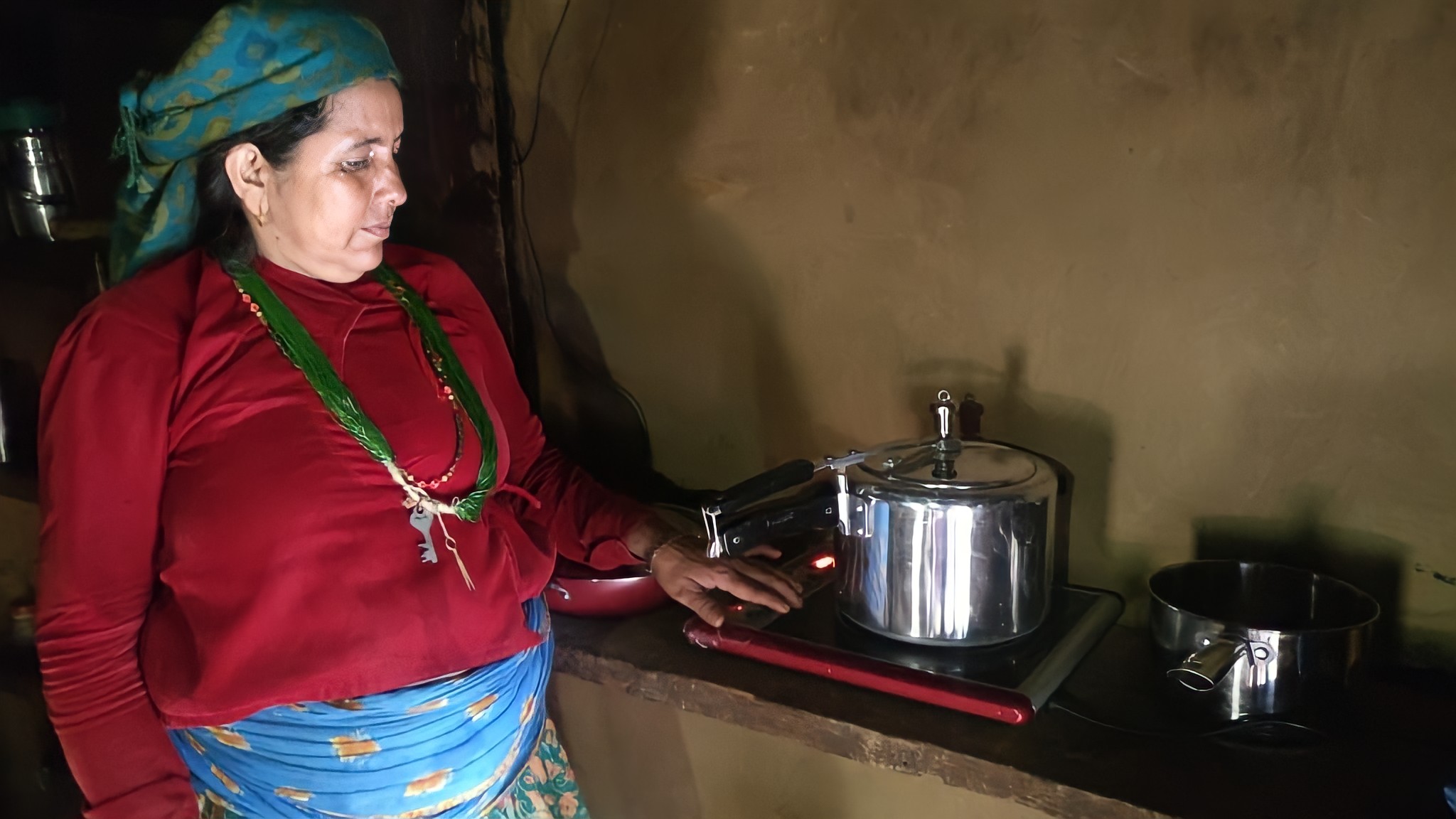
Bharati Pathak, chairman of the Federation of Community Forestry Users Nepal, says while the demand for briquettes and charcoal is high in both urban and rural Nepal, one problem is that the Chinese products have captured the market.
“Many forest products can be used for briquette production. If we could minimize production costs with greater use of technology, the beneficiaries of community forests could benefit a lot financially,” she says.
As for encouraging the LPG-to-electric switch in city areas, the Alternative Energy Promotion Center (APEC) has recently introduced a free induction stove distribution scheme for university students in Kathmandu valley. Almost 13,000 students have applied. An AEPC representative says this scheme will help students adopt induction and change their perception of electric cookers.
Nepal uses most of its energy for cooking and transport purposes. While the use of induction stoves and electric vehicles has been rising, they are still not used in sufficient numbers to achieve energy-efficiency. Many people bought induction stoves when there was a major LPG shortage during the 2015 Indian blockade and at the start of the Covid-19 pandemic. Similarly, the skyrocketing fuel prices, driven by the Russia-Ukraine war, have persuaded at least some vehicle owners to switch to electric options.
Shrabya Sapkota has been riding a petrol-run scooter for almost five years and is now trying to switch to electric.
“Five rupees of petrol in my scooter gives me a kilometer’s mileage. But if I were to have an electric scooter, I would have to spend just 30 paisa to get the same mileage,” the 22-year-old says. “Say, I do 1,000 km on the road a month. In that case, in three years, I will save around Rs 170,000. Even if I have to replace the e-scooter battery, which costs around Rs 100,000, I still save Rs 70,000.”
But Sapkota represents only a tiny fraction of people who are willing to ditch their fossil fuel-run vehicles for electric ones. There is a general belief that electric vehicles (EVs) are expensive and don’t do well off-road, even though users’ experience suggests otherwise. Consumers are also concerned about the unavailability of charging stations on long-distance travel.
Also read: A snapshot of Nepal’s energy ecosystem
A few electric vehicle companies have opened up charging stations across the country to boost their client numbers—and the approach seems to be working. If other companies follow suit, energy experts expect a significant rise in adoption of EVs.
Brijesh Shrestha, an electric car owner, says humans are by nature resistant to change.
“I too had second thoughts while getting the electric car,” he says. “Many more charging stations and infrastructure should be built to convince folks to go electric.”
The budget for the fiscal 2021/22 had slashed import duties on battery-powered vehicles from 40 percent to 10 percent in a bid to promote their use. Electric vehicles of up to 100kW capacity had to pay 10 percent in custom duties. Likewise, vehicles of 100-200kW capacity paid 15 percent, while 200-300kW vehicles paid 40 percent.
According to the Department of Customs, 1,103 electric cars worth Rs 3.24bn entered Nepal between mid-July to mid-January in the fiscal year. In the same period in the previous fiscal year, only 51 cars valued at Rs 105.19m had been imported.
EV dealers in Nepal see a bright future for electric vehicles: they have been able to meet only 30 percent of demand as India hasn’t been producing enough EVs. But the latest budget has been a dampener.
In its budget for the fiscal year 2022/23, the government significantly hiked excise and customs duties on EVs. A 30 percent customs and 30 percent excise duties have been slapped on EVs of 100-200kW capacity. For electric cars of 201-300kW capacity, customs and excise have been set at 45 percent each. Similarly, excise and custom duties for EVs of over 300kW capacity have been upped to 60 percent each.
This has increased the price of EVs in the Nepali markets, making it difficult for consumers to jump to the electric mode of transport.
Also read: Working out the right combo
Even if people were to move to electric vehicles in droves, there is a lingering concern about the carrying capacity of electricity lines. Nepal’s per capita energy consumption of around 300 units is the lowest in South Asia. This means the country will need a lot of energy in the coming days as it modernizes. Moreover, the current distribution lines are made for lighting purposes, and if people were to switch to electric stoves and vehicles in large numbers, the lines may collapse.
Besides, the consumption of electricity is also growing in rural Nepal.
“The Nepal Electricity Authority (NEA) has been unable to provide sufficient electricity in rural areas,” says Mahendra Prasad Chudal, program manager at the National Association of Community Electricity Users-Nepal. “We are trying to sort out a few problems related to bulk-buying and distribution of electricity with the NEA.”
NEA spokesperson Suresh Bahadur Bhattarai says power production is a dynamic process and the agency has been upgrading its system in line with changing demands.
“We have been appealing to the public to switch to electricity. We wouldn’t have done so if our infrastructure couldn’t bear the load,” he says. “To promote electric vehicles, we are also planning to install at least 50 charging stations across the country within the next fiscal year.”
The progressive devaluation of Nepali currency
The exchange of any two currencies is carried out based on two types of rates—pegged rate (fixed exchange rate) and floating rate (converted exchange rate). The currency exchange rate is determined and managed by the central bank of each country. The exchange rate is generally determined based on demand and supply.
The exchange rate of Nepali currency, which is pegged to the Indian currency, has fallen as the Indian currency has been taking one hit after another following the Covid-19 outbreak and the Russia-Ukraine war.
Nepal has an import-based economy, so the devaluation of the domestic currency against the US dollar will also impact the imports of foreign goods.
In the past decade, the dollar-Nepali rupee exchange rate has significantly increased. In 2011, the average exchange rate for a dollar was Rs 74. As the Nepali rupee weakened, a dollar fetched Rs 85 in 2012, Rs 93 in 2013, and Rs 97 in 2014.
The downward trend continued in the following years. As of 2022, the highest exchange rate is Rs 125 for a dollar.
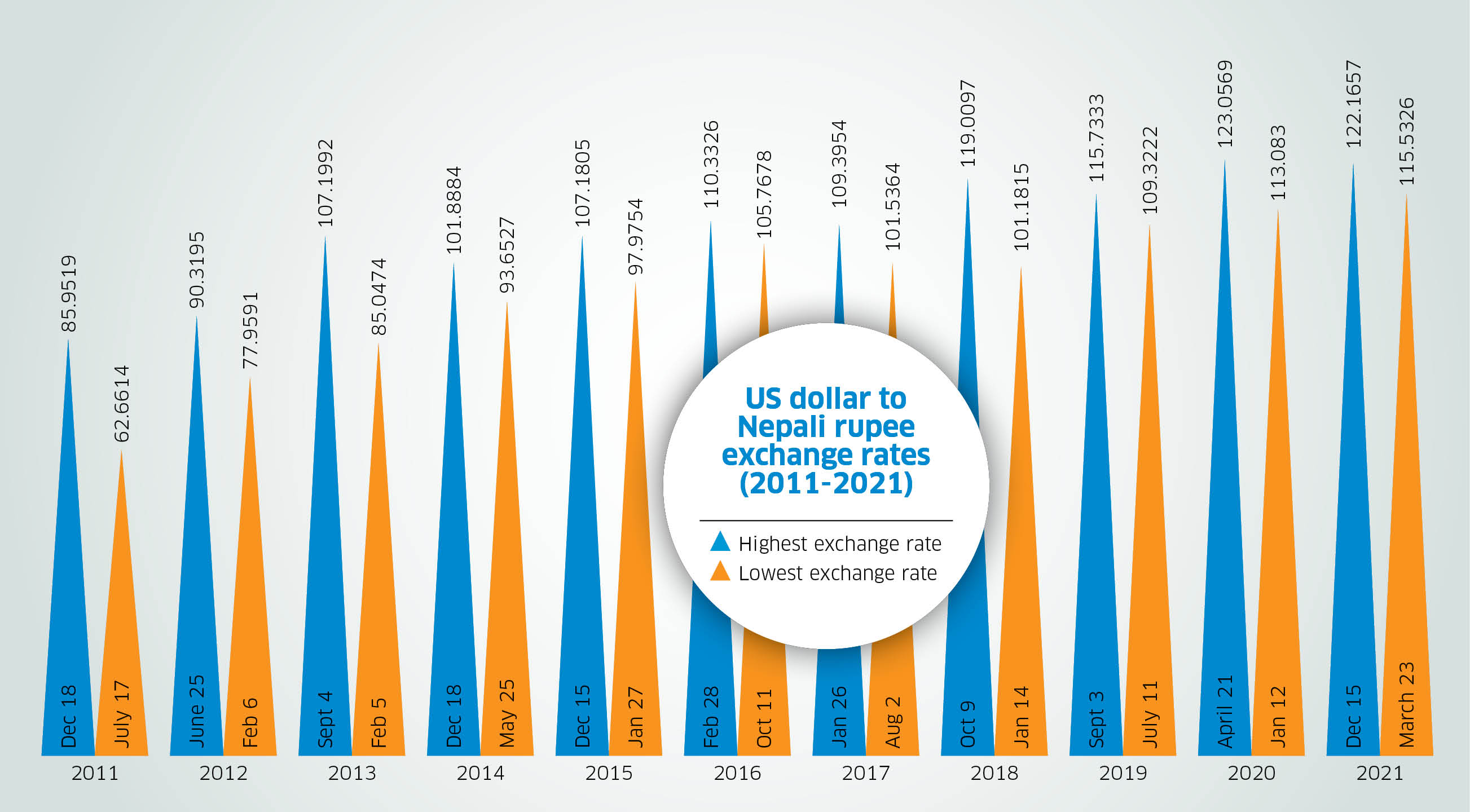
If our economy was export-oriented, the dollar’s strengthening could have been an opportunity. But weak currencies make imports expensive and also create inflationary pressures on the economy. Similarly, the country incurs a loss while repaying foreign loans in dollars.
The immediate effect of the devaluation of the Nepali currency is reflected in the expansion of exports and contraction of imports, which tends to negatively impact balance of payments.
We could have benefitted from the appreciation of the dollar as remittances that migrant workers send home would then increase in value. Unfortunately, this is not the case as even remittances have gone down in recent times.
Unpegging would have made us another Sri Lanka
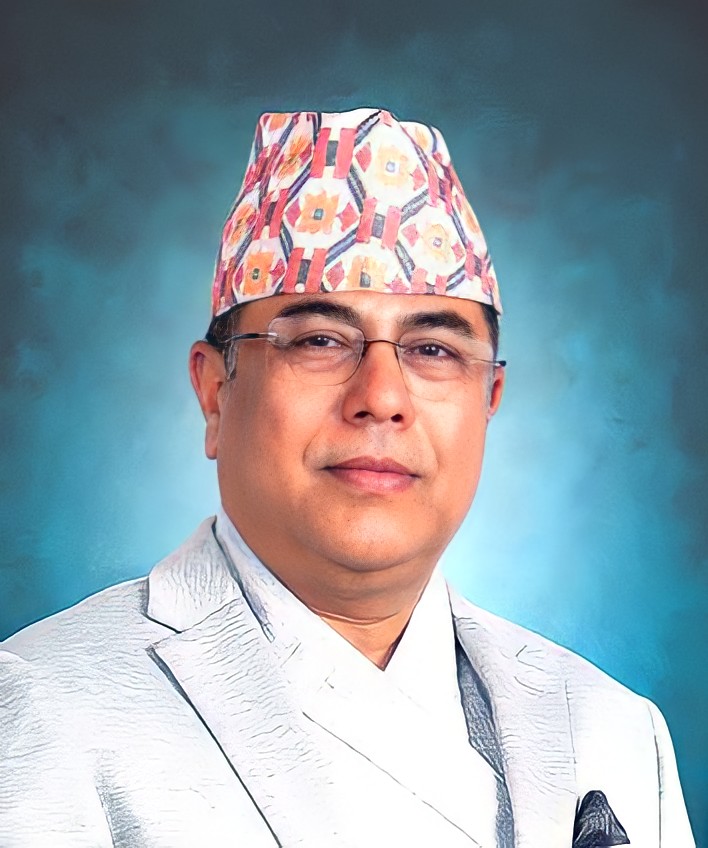
Chiranjibi Nepal
Ex-governor of Nepal Rastra Bank
Our international valuation relies on Indian forex as we have pegged our currency to that of India. The reason behind the depreciation of the Nepali rupee is the fall of the Indian rupee. In 2011, a dollar was equal to IRs 46, so the Nepali rupee was valued at Rs 74. Now, a dollar fetches IRs 77, which takes the valuation of the Nepali rupee to Rs 125. The depreciation rate is the same for both Indian and Nepali currencies.
There is an old question: why can’t we float our currency? This is because the currency is a very sensitive matter. International markets do not recognize our currency because of our poor economy. First, we have to increase our exports to India. Unless our goods can compete in Indian markets, it is impossible to enter the international arena.
Even if we lift our economy, the pegging to the international market should be a slow process. When a former governor of Nepal Rastra Bank had talked about unpegging our currency from the Indian rupee. This led to an acute shortage of Indian currency in Nepal and affected our trade. So unless we are independent in goods, our direct link to the international market should not be an option. If we had pegged ourselves with the dollar, our situation would have been worse than that of Sri Lanka.
The public should trust the currency. Once, because of lack of trust, Cambodian people stopped using their currency and shifted their transactions to the dollar.
Mithila Chaudhary obituary: Champion of the marginalized
Birth: 20 March 1966, Dhanusha, Nepal
Death: 10 June 2022, New Delhi, India
Mithila Chaudhary, a former minister for population and environment, passed away after a long battle with cancer on June 10. She was 56.
Born to an Indian father and a Nepali mother in Madhubani of Bihar, Chaudhary spent her formative years in India. She married Madan Mohan Chaudhary, a lawyer from Saptari district, in 1984.
Besides being a lawyer, Madan Mohan was also a member of the Bishnu Bahadur Manandhar-led Nepal Communist Party (Samyukta). Chaudhary's interest in politics grew following her marriage.
Her home in Saptari used to be the meeting venue for communist leaders and cadres, and she used to listen to them intently. She was deeply inspired by Manandhar and soon joined the party.
In 1987, Chaudhary lobbied for the establishment of the party’s women’s wing, Nepal National Women Federation, in which she served as the Saptari district committee chair. She also led the women’s front during the anti-Panchayat movement, and encouraged many ordinary women to rise up against the party-less system.
In 1990, during the decisive movement against the Panchayat rule, Chaudhary played a pivotal role to rally party members as well as masses after authorities detained several senior party leaders, including her husband. She too was arrested for spearheading anti-government protests, but soon after democracy was restored in the country she was released along with other party leaders.
Chaudhary continued her political activism post-1990. She led the Mahila Mukti Aandolan of 1996 organized for the rights of the marginalized women. She also engaged herself in the party's promotional campaigns and elections.
In 2001, her political career came to a near end when she suffered a major heart attack. But she bounced right back when her leadership was most needed during the Madhes movement of 2007.
Chaudhary once again proved herself an effective leader, for which she was made the party's lawmaker in the second Constituent Assembly under the proportional representation quota. She had gotten an overwhelming support when her party held an internal vote to pick the lawmaker candidate.
In 2017, Chaudhary was appointed the minister for population and environment in the Sher Bahadur Deuba-led coalition government.
During her tenure as a minister, she did a remarkable job in the field of alternative energy and climate change, and represented Nepal with great pride in the international arena, says her son Abhinav.
Nepal became a member of the International Renewable Energy Association during Chaudhary's tenure. She also represented Nepal at the climate change conference, COP23 held in Bonn, Germany where she urged the world leaders to follow the Paris Agreement.
Chaudhary’s party NCP (Samyukta) merged with the CPN (Maoist Center) while she was in the government. Her engagement in the party affairs started waning following the merger. Meanwhile, her health condition also deteriorated after she was diagnosed with cancer.
Chaudhary parted ways with party politics, but tried to keep herself active to push the cause of the marginalized communities.
Her son Abhinav says she would push him to help the Dalit community that was affected by the Covid-19 pandemic and the subsequent lockdowns.
Chaudhary passed away in the course of treatment. She is survived by her husband and their son.






